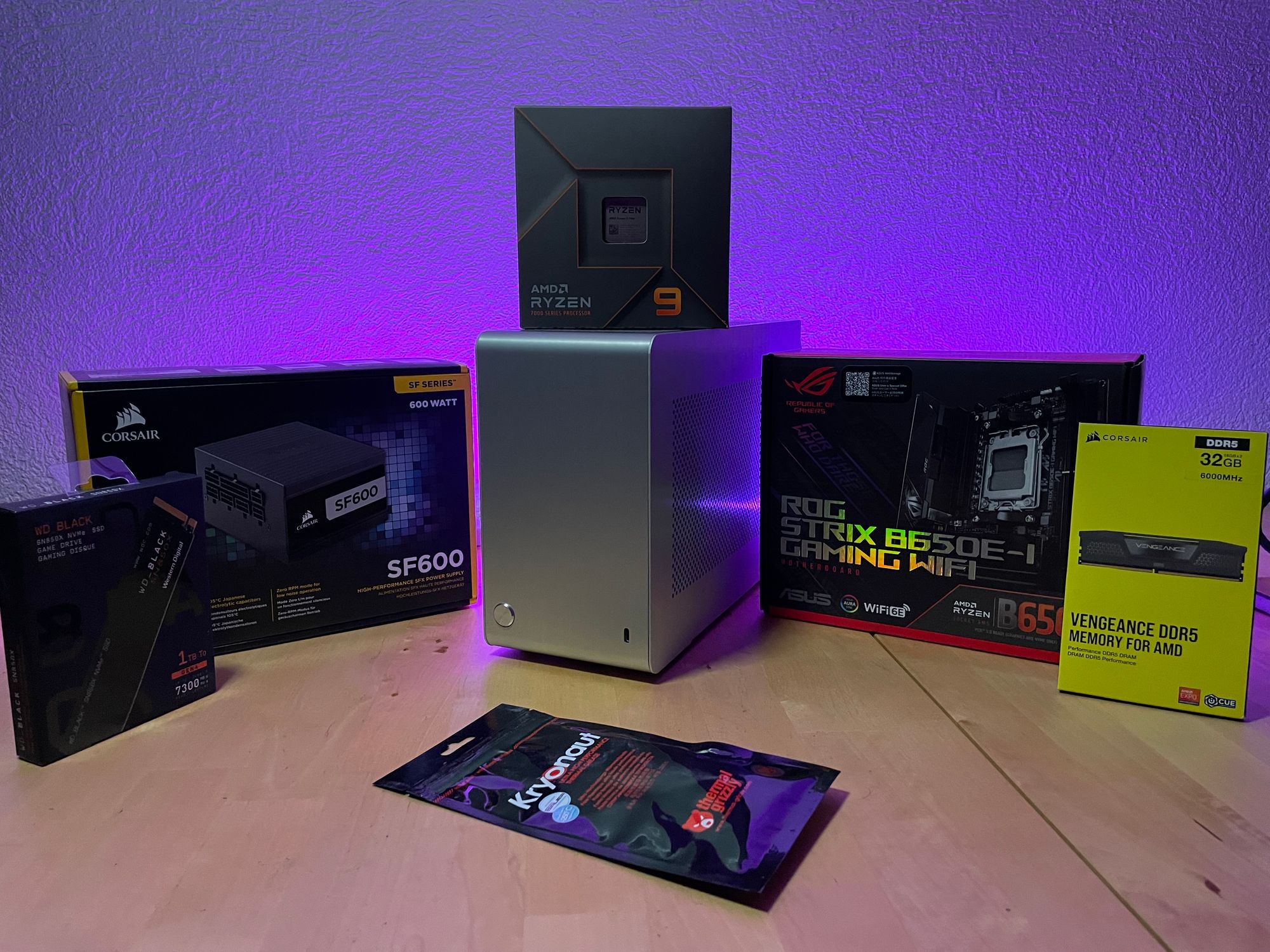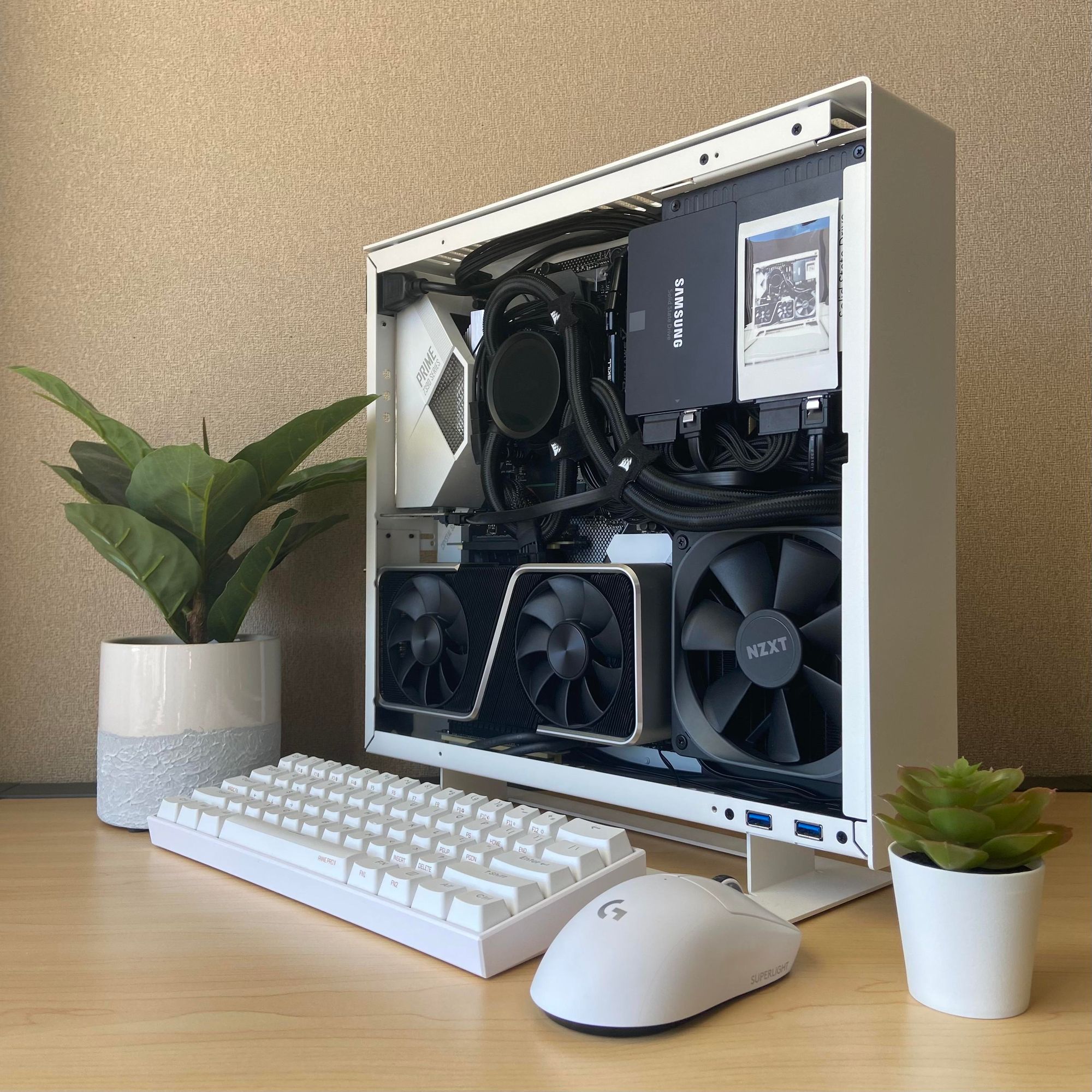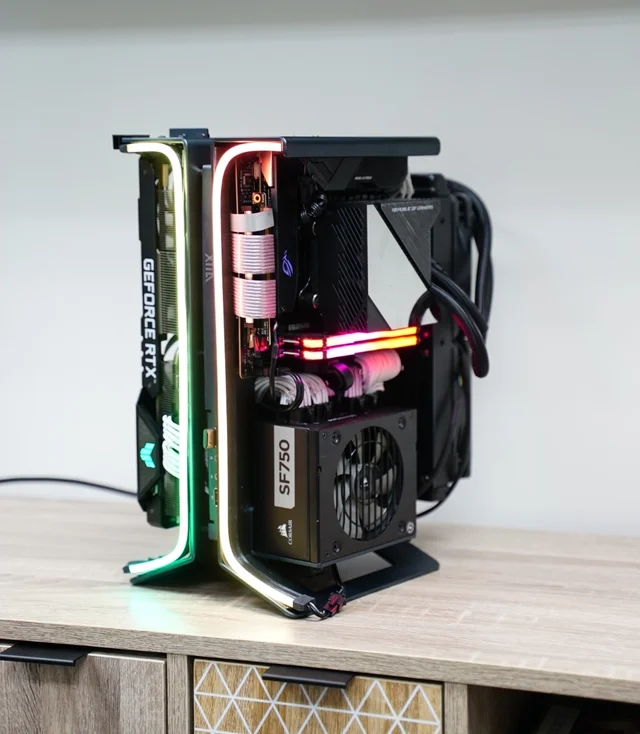I am building an SFFPC : Case selection

In my previous article, we've covered the essential components required for assembling your Small Form Factor PC (SFFPC). Now, there's one element left to complete your build: the case. It's both logical and recommended to select the case as the final step. The most aesthetically pleasing cases may not necessarily be the most suitable for your specific configuration. You'll often find yourself facing a dilemma between style and volume. This step is not only crucial but also one of the most challenging. Here's an overview to help you navigate through the case selection process:
- SFFPC Case Size: SFFPCs are often compared to the dimensions of a shoebox, with a target volume of around 10 liters—a goal for purists in the SFFPC community. However, achieving this goal is not always straightforward.
- Component Sizes and Cooling: As previously mentioned, component sizes have been on the rise, accompanied by increased power consumption. Naturally, this requires more efficient cooling solutions, often leading to larger cases.
- Modern Case Volumes: In contemporary SFFPC builds, case volumes typically range from 15 to 20 liters. This represents nearly a doubling in size compared to our initial point of reference.
- Is Size a Concern? In absolute terms, the increased case size is not inherently problematic. SFFPC cases still remain significantly smaller than traditional towers while exuding a stylish and compact aesthetic. However, if you had envisioned the convenience of easily transporting your PC to gaming sessions at your friends' places, the larger cases may present a challenge compared to the shoebox-sized options that can readily fit in a backpack.
- Size vs. Power: As emphasized in the introduction, striking the right balance is the key challenge. Honesty with yourself is paramount in determining your ideal SFFPC. Do you truly need a 12-core CPU? Is a cutting-edge graphics card a necessity? Will you be moving your PC regularly? Start by answering these questions honestly, and then proceed with selecting the case that aligns with your practical requirements and personal preferences.
By thoughtfully considering these factors, you can confidently select a case that complements your SFFPC configuration, ultimately achieving the perfect blend of aesthetics and performance for your compact system.
Case Shapes
SFFPC cases come in various shapes, each with its unique design and advantages. Understanding these different case shapes can help you make the right choice for your compact system:
- Classic: This design resembles a traditional ATX tower case, allowing you to assemble your SFFPC components much like a standard PC. While it offers flexibility, the interior volume optimization is not a primary focus in classic SFFPC cases. This classic style is becoming increasingly rare in the SFFPC landscape.
- Console: Console-style cases are characterized by a vertical, elongated form factor, reminiscent of gaming consoles like the PS5. One of the popular examples of this style is the Fractal Ridge case. Console cases offer a unique and sleek appearance, often fitting seamlessly into entertainment setups.

- Sandwich: Sandwich-style cases divide the interior into two distinct zones—one for the motherboard and another for the graphics card. These two sections are connected by a PCIe extension cable, often referred to as a Riser cable. This design is similar to the console form, where the layout emphasizes a compact, vertical orientation. The sandwich-style case is currently one of the most commonly used designs in the SFFPC community.

- Open-air: In open-style cases, your PC components are assembled on a structure (or backbone) without a traditional enclosure. This design allows all components to be exposed, facilitating efficient cooling. However, it also makes the system more susceptible to dust, which can accumulate more readily without an enclosed case.

Understanding these different case shapes enables you to make an informed decision based on your preferences, the components you plan to use, and the overall aesthetics you desire for your SFFPC build.
Case Dimensions
Beyond the overall volume, it's crucial to carefully review the specifications of your chosen case, paying particular attention to length, width, and height. While most ITX cases can accommodate a motherboard and power supply, the same isn't always true for the CPU cooling solution or the graphics card.
Two important factors to consider are the length and thickness of the graphics card you select. For instance, if you opt for the Nvidia GTX 4080, you should be aware that it measures at least 30.4 cm in length, potentially even more depending on the manufacturer. It's advisable to choose a case that has a length of at least 35 cm to accommodate this card comfortably. Additionally, keep in mind that the card is quite thick, requiring three slots on the case's front. Not all cases can accommodate this width, so it's essential to verify compatibility.

When it comes to CPU cooling, modern processors often come with high Thermal Design Power (TDP) ratings. If you plan to use an air cooler, you'll notice that the heatsinks provided can be quite substantial. They're often tall and, in some cases, quite wide. Thus, it's crucial to confirm the maximum heatsink height supported by your chosen case. Furthermore, ensure that the cooler you select is compatible with your CPU, considering both TDP and the CPU socket. It's worth noting that achieving compatibility can sometimes be challenging.

To further complicate matters, the width of the coolers can also be a deciding factor, as they may interfere with your RAM or VRM (the L-shaped section on the left that powers your CPU). In these situations, online forums and tutorial videos can be invaluable resources, as you're unlikely to be the first person attempting such a build. These resources provide insights and guidance based on the experiences of others in the SFFPC community.
Conclusion
As you've undoubtedly gathered, assembling a Small Form Factor PC (SFFPC) is no small feat; it's a challenging and often costly endeavor that may deter many. However, the unique aesthetics and the gratification of building one's SFFPC from the ground up serve as compelling incentives for enthusiasts like myself.
While I remain realistic about not attempting to rival the world of ATX systems in terms of sheer performance, I firmly believe that SFFPCs have the potential to pack a considerable punch. With this conviction in mind, I'm embarking on my own SFFPC build, driven by the desire to discover just how formidable a compact powerhouse can be. The SFFPC world is a realm where the balance between performance and form factor truly comes to life, making it an enticing endeavor for those who appreciate both the art and science of PC building.